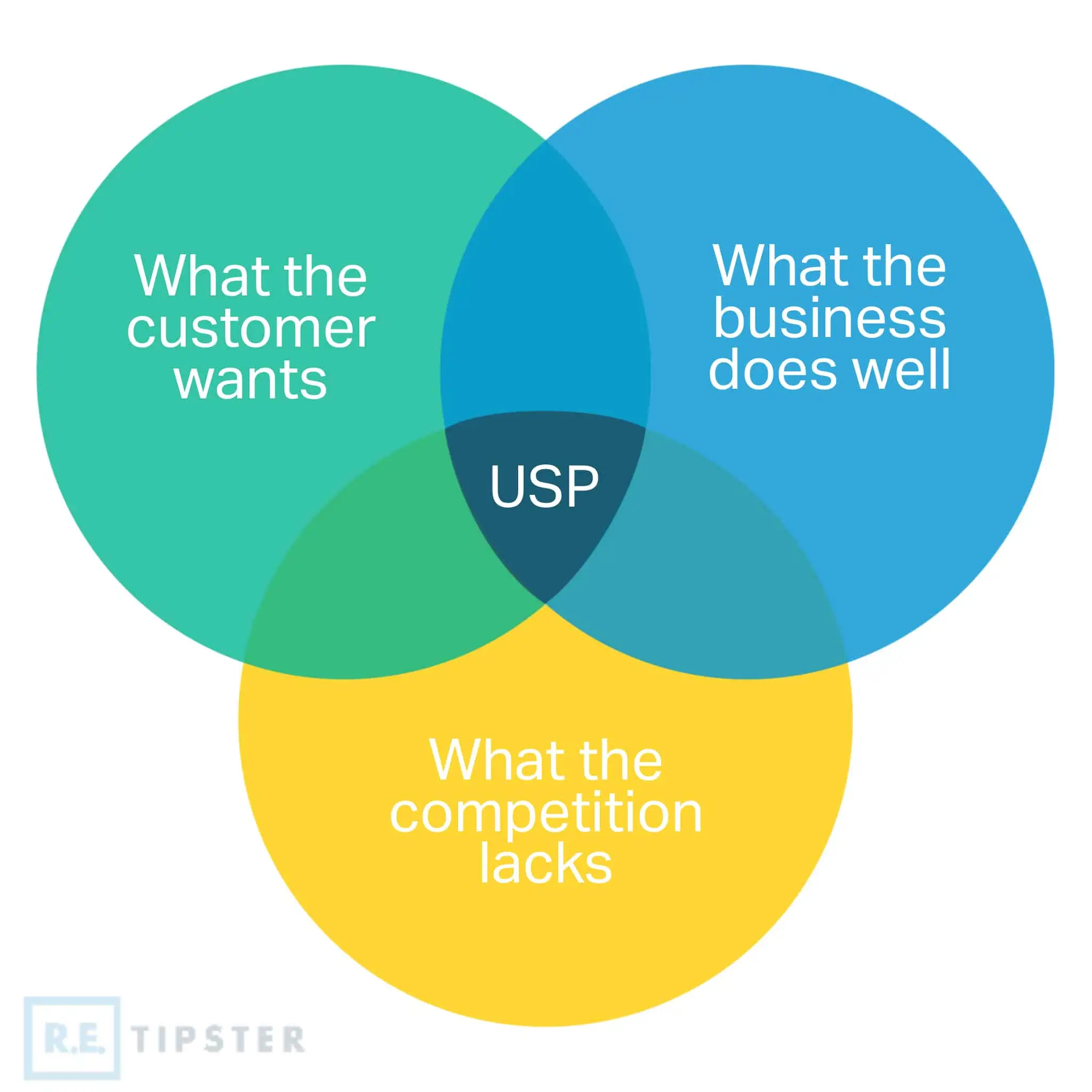What Is a Unique Selling Proposition (USP)?
Shortcuts
- A unique selling proposition or unique selling point (USP) sets a business apart in its marketplace and answers the question, “Why should you buy from me?”
- A compelling unique selling proposition sets a business apart from its competitors and serves as the foundation for its marketing and advertising strategies.
- USPs often fall into one of three main categories: product (superior or unique product), price (affordability or value for money), and support (ongoing customer support and service).
- Whatever the category, a good USP should be assertive, specific, and customer-focused.
How Does a Unique Selling Proposition Work?
The USP is arguably why the business exists in the first place. While there are many reasons why people start businesses, a USP distinguishes it from its competitors or in its industry.
A strong USP helps a business stand out against its direct and indirect competitors. Competition is a significant constraint on profitability in any industry, but it is necessary for economic growth[1]. By building around their USPs, businesses can be unique from the start and have a chance to compete for a slice of the market.
Lastly, the unique selling point is usually the crux of a business’s marketing strategy[2]. They create slogans, mission and vision statements, ad copies, marketing content, and so on around their USPs. This helps prospective customers distinguish brands in a world of homogeneous competitors, even more so now that anyone can start a business.
How Do Businesses Discover Their Unique Selling Proposition?
There is no standard process for pinpointing USP. For some, it comes as a sudden inspiration; for others, it may be mundane and pedestrian. However, entrepreneurs agree that discovering a business’s unique selling proposition will require creativity and self-inquiry, and it should not be just a random thing that customers naturally expect.

The USP “gap.”
For example, because Amazon already offers same-day delivery, it is a poor choice to make a company whose USP is built around a 3-day shipping period. Most customers expect same-day deliveries[3], so there is no reason to offer an inferior service.
Characteristics of a Compelling USP
A solid USP plays to a business’s strengths and must be based on what makes a brand or product uniquely valuable in the market.
Being “unique” is not necessarily a solid unique selling proposition. Instead, brands must focus on aspects their target audience cares about; otherwise, their messaging will not be as relatable as it needs to be.

Uniqlo’s USP is “unique high fashion.” (Uniqlo Osaka & GU Omeda, Tokumeigakarinoaoshima, CC0, via Wikimedia Commons)
The main characteristics of a compelling USP include the following:
- Assertive — An excellent unique selling proposition is assertive but defensible[4]. It should be centered around how the brand is different or better compared to its competitors with proof.
- Specific — A USP should be specific. Generic statements are not memorable. For example, rather than saying, “We sell high-quality products,” a good USP focuses primarily on what exactly makes the products high-quality.
- Solves a problem — A compelling USP communicates to customers that the business understands their pain points. A USP is a value proposition because it must immediately describe the business’s value to its potential customers.
- Unique — The product or service does not have to be unique, but the value it provides its customers should be. Some marketing offers may be confused with USP; for example, a business offering 30% off or free shipping may effectively attract potential customers, but the message is not unique (and, therefore, not a USP).
How Businesses Can Establish Their USP
A business’s unique selling point is the overlap between what its customers want and what it does better than its competitors. This can be a tough ask, especially in a highly saturated market.
These four methods may be helpful for businesses and professionals looking to discover and write their USPs.
Evaluate the Market
Knowing what motivates customers’ behavior and buying decisions is a great way to uncover a business’s unique selling proposition.
This market evaluation goes beyond the traditional customer demographics—geographic location, age, gender, income, etc.—that businesses tend to collect when setting up their marketing strategy and analyzing sales trends. Instead, it is more extensive, which includes why people want to purchase the product or service in the first place. This narrows down the business’s focus to things that deliver value to the customer.
Analyze the Competition
The business needs to look at the USPs of its competitors and how they are maximizing their USPs. For example, ask:
- How do they come across in the marketplace?
- How do they market their products or services?
- What are they doing to distinguish themselves from other competitors?
The answers to these questions can provide valuable insight and inspiration.
It also helps to compare different USPs offered by the competition. But, again, the goal is to find value proposition gaps[5] not currently represented in the market and then capitalize on them as the foundation for establishing a unique value offering.
Approach It From the Customer’s Perspective
Too often, entrepreneurs forget that, ultimately, their business is to satisfy the customers’ needs, not theirs.
Business owners need to step back from daily operations and take the time to understand what customers want. What do they expect when shopping for such products? What do they need to improve in the shopping process?
These questions can give the business insight into how it can add even more value to the customer experience, which serves as the basis for its unique value proposition.
Rooted in the Business’s Values
The company was created around a set of values. A good USP should be rooted in these values to be deep and meaningful.
Types of Unique Selling Propositions
Most USPs fall into one of the three categories described below.
1. Products
These unique selling propositions seek to establish the business’s claim as a better product provider than its competitors. The primary target value here is superior quality.

While not its USP, the Levi’s pocket rivets revolutionized the tailoring of denim trousers.
For example, a jeans-maker’s unique selling proposition is that they do one thing well—make quality clothing, specifically jeans. It did not shy away from the fact that making jeans is all it does but instead capitalized on it to present itself as a company with a singular focus.
2. Prices
Cost is one of the most prominent considerations in any buying decision. Building a unique selling proposition around affordability can be a great way to stand out in the market. This appeals to customers who want to spend less but want quality.
3. Support
Sometimes, what makes a business stand out is not its product quality or price but its reliable customer support system. Many customers are attracted to buying from a company that assures them that no matter what happens, they will be taken care of and their concerns appropriately handled [6].
Support-based selling propositions are ideal for businesses whose models require them to cultivate ongoing customer relationships, such as subscriptions and software-as-a-service (SaaS).
Sources
- Boushey, K., Knudsen, H. (2021, July 9.) The Importance of Competition for the American Economy. Official Website of The White House. Retrieved from https://www.whitehouse.gov/cea/written-materials/2021/07/09/the-importance-of-competition-for-the-american-economy/
- Unique Selling Proposition (USP). (n.d.) Entrepreneur. Retrieved from https://www.entrepreneur.com/encyclopedia/unique-selling-proposition-usp
- Saleh, K. (2022, May 4.) The Importance of Same Day Delivery – Statistics and Trends. Invesp. Retrieved from https://www.invespcro.com/blog/same-day-delivery/
- Kumar, B. (2021, January 28.) What a Unique Selling Proposition Is (And Isn’t) Plus 10 Examples to Inspire You. Shopify Blog. Retrieved from https://www.shopify.com/ph/blog/unique-selling-proposition
- Weber, M. (2019, September 18.) Value Proposition and Gap Analysis. Western Washington University. Retrieved from https://wp.wwu.edu/ideastoimpacttest/2019/09/18/value-proposition-and-gap-analysis/
- Olga. (2017, December 19.) The Impact of Customer Service on Purchase Decisions. Provide Support. Retrieved from https://www.providesupport.com/blog/the-impact-of-customer-service-on-purchase-decisions/









